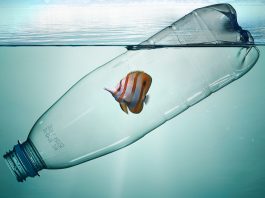A novel study has shed light on the problem of ocean microplastic pollution, confirming it could be far worse than anticipated.
Scientists at the Institute of Environmental Science and Technology of the Universitat Autònoma de Barcelona (ICTA-UAB) have conducted research to assess to what extent microplastics are present in the coastal areas and seawater of the Mediterranean Sea, both in the sea surface water, seawater column and in marine sediments.
The threat of ocean microplastic
The team’s research resulted in some worrying conclusions. According to the scientists, the levels of microplastics in the Mediterranean are probably higher than estimated, but the methods we have for studying ocean microplastic pollution are not capable of recording the full extent of the problem and underestimate how much of a serious environmental threat is posed to these marine ecosystems.
Ocean microplastic pollution is an ever-growing environmental problem that currently threatens our ecosystems. The Mediterranean Sea is one of the world’s greatest plastic accretion areas and displays pollution levels comparable to the ‘great marine garbage patch’ of the Pacific Ocean. This is due to the large population that occupies the area, and the marine dynamics mean that floating plastics are trapped in the basin, with limited ability to escape into the Atlantic Ocean.
Evolving methodology
The scientific field responsible for studying this phenomenon is comparatively new and its techniques are continually progressing. This means it is challenging to define the most applicable terms and methods with which to identify them.
“Plastic materials are numerous and very diverse, with different characteristics that complicate having a standard framework to analyse them all in the same way. Moreover, additives such as pigments or retardants add further complexity”, explained Laura Simon, ICTA-UAB researcher and first author of the study, published in the scientific journal Environmental Pollution.
The study states that the methods used in laboratories for sampling are very diverse, “and although this has made much progress in this scientific field, it has also meant that many of the data produced so far cannot be compared,” she added. She also recognised that this impacts the current knowledge the scientific community has of this problem.
Microplastic in coastal areas
According to the research, of the 3,000 samples collected in the past 10 years, 82.8% were taken in coastal areas. As a result, researchers have less evidence and dates in which to assess the distribution of microplastics in the open sea.
As well as this, nets with a mesh size of 200 microns or more were applied to sample surface waters, thus smaller particles cannot be caught.
Previous studies estimate that the Mediterranean Sea contains 84,800 microplastics per km2 in its surface waters, around 300 microplastics per kilogram of marine sediment, and 59 microplastics per kilogram of beach sand.
“The number of microplastics in the natural environment increases as their size decreases, therefore, the levels of microplastics in the Mediterranean are probably higher, but because of the methods used we are not able to record them,” said Dr. Patrizia Ziveri, head of the research line at ICTA-UAB.
Most plastics float in the sea. However, the seabed is understood as the final destination for microplastic accumulation.
“We still have very little knowledge on the mechanisms that export microplastics from surface waters to the seafloor, for which we need more studies in the water column,” concluded Dr. Michael Grelaud, researcher at ICTA-UAB.
The researchers determined that going forward, it is necessary to define a common framework to evaluate the results and amalgamate techniques to be able to distinguish the broad spectrum of plastic pollutants in the Mediterranean Sea and their potential impacts.
Finally, they emphasise the significance of greater international collaboration between Mediterranean countries, as currently the eastern part of the basin and North Africa have been sampled to a lesser extent.









